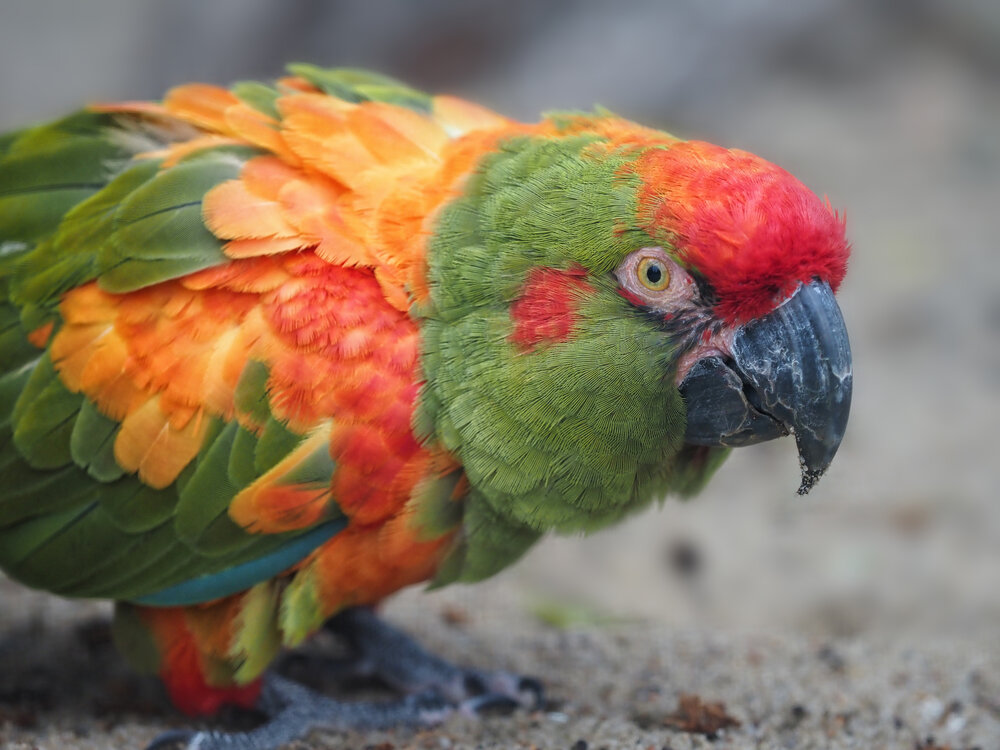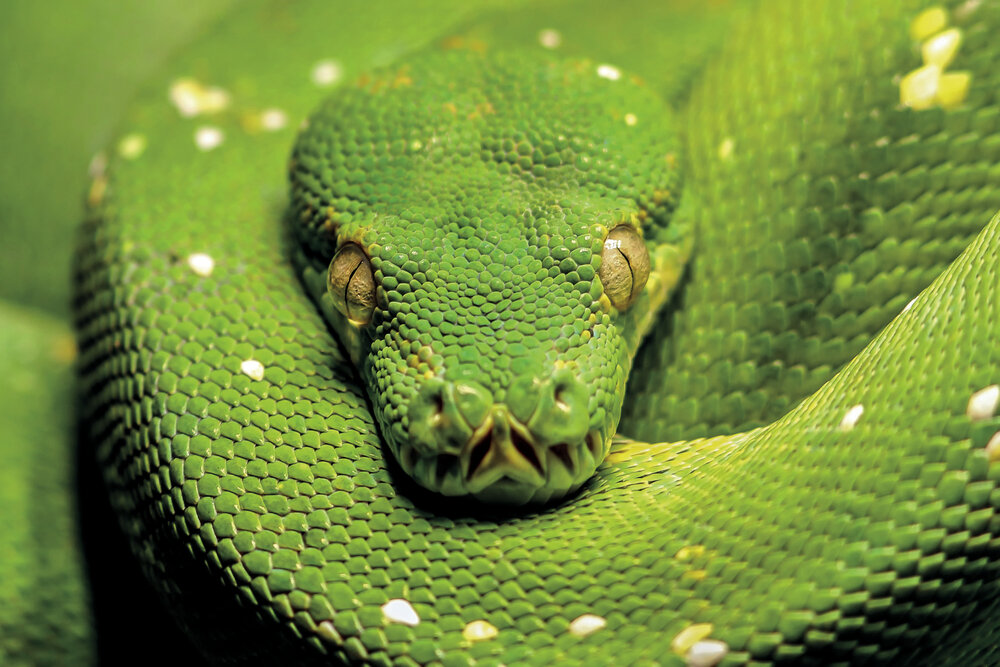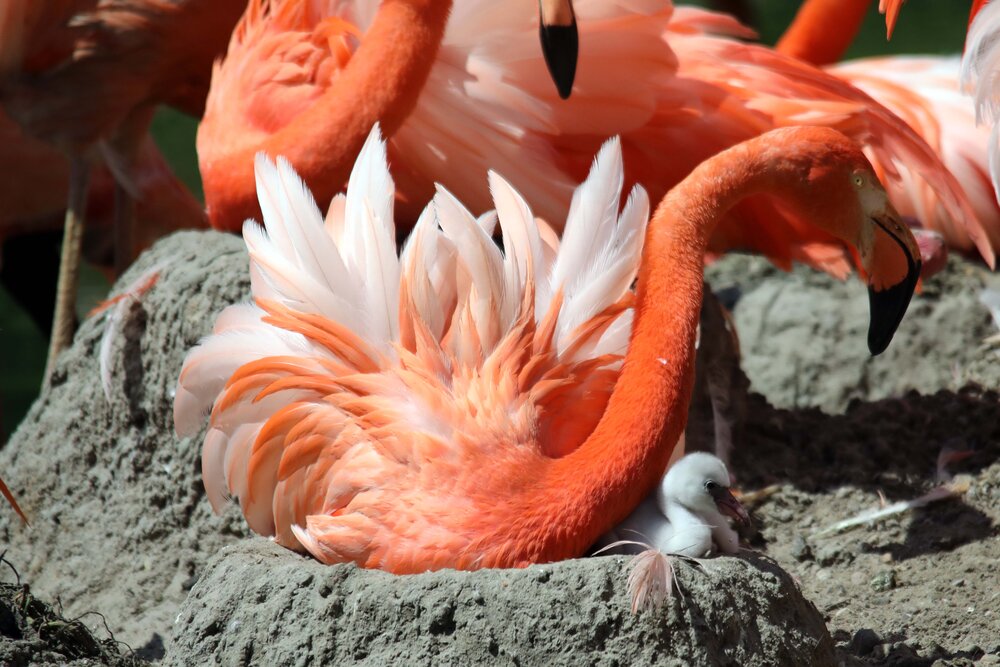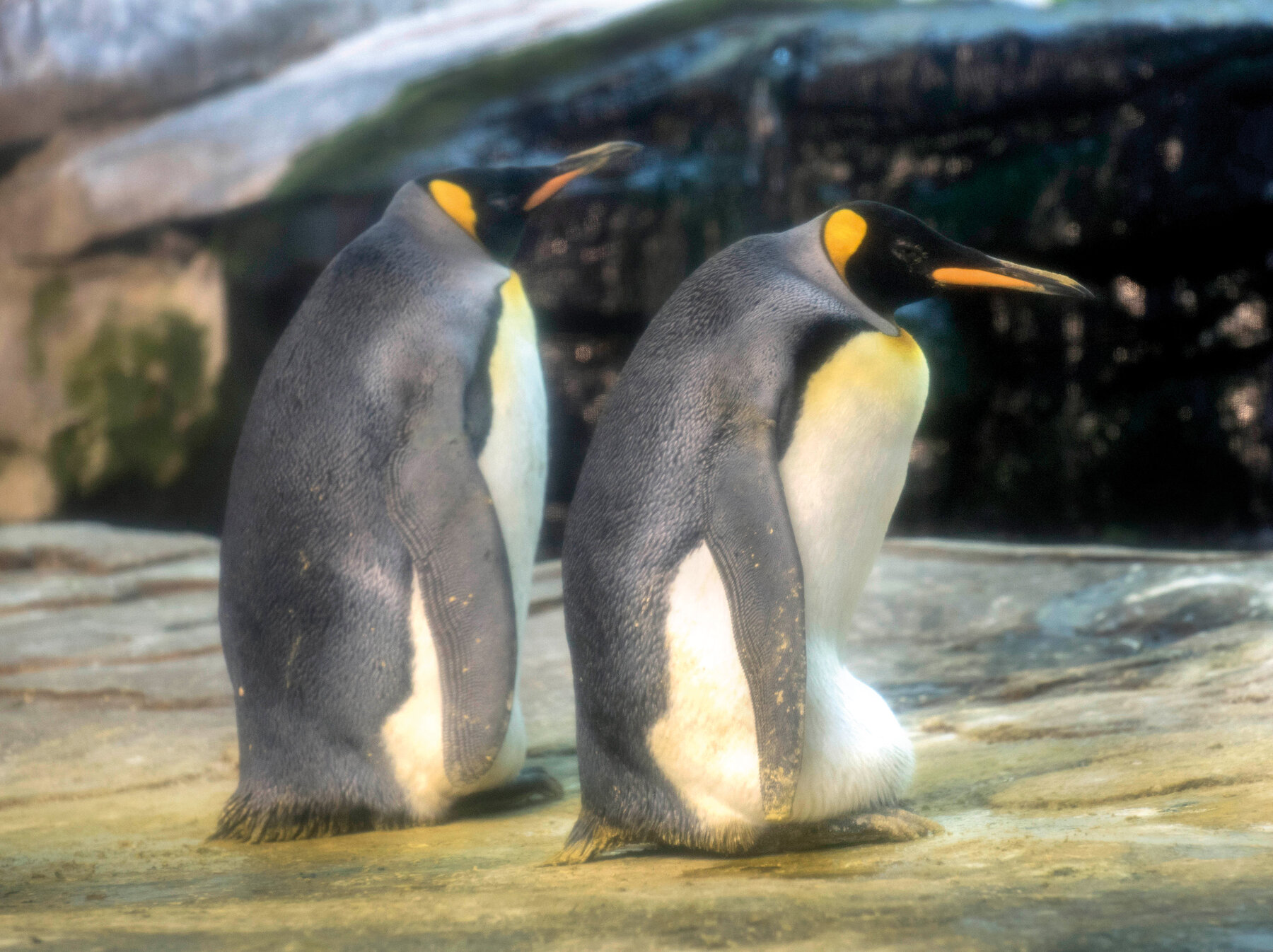Embracing diversity
A vibrant and colourful love life
The natural world displays an astonishing richness and diversity – there are shimmering metallic fins, vivid green scales, bright pink, yellow and blue feathers, striped, spotted and speckled coats. How can we help conserve this diversity? And how do animals ensure the continuation of their own kind? What are the laws of attraction in the animal kingdom? And is sexual activity always purely about reproduction?
Beyond the birds and the bees
Silvan Pfefferkorn, Deputy Director of Zoo Berlin’s Zoo School, leads more than 100 different themed tours of Zoo Berlin. He teaches visitors of all ages about the fascinating animal kingdom – including the various reproduction strategies employed by different species. We talked to him about the diverse love lives of the animals at Zoo Berlin.
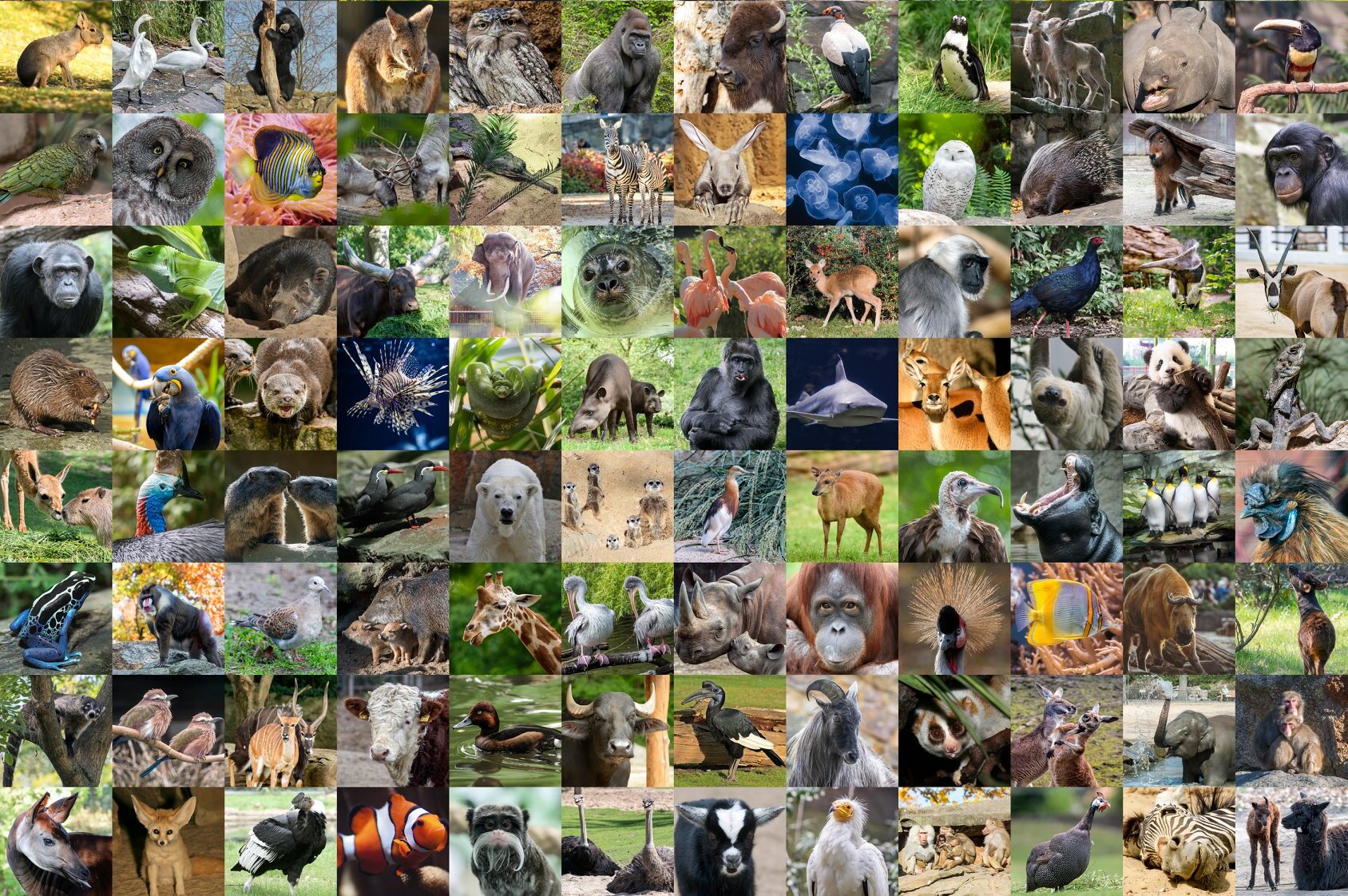
In what ways is our love life different to that of animals?
“From a purely biological perspective, humans are animals too, so sometimes the differences are not as big as you might think. Scientists and philosophers have long sought the animal that lurks within humans and found traces of humanity in animals. We humans have a general tendency to project human characteristics onto other life forms. We so badly want to understand how animals think and feel. And because we have no other categories of understanding than our own, we tend to map our own perceptions and ways of thinking onto our fellow creatures. This anthropomorphism, as it is called, is absolutely understandable, but I do think it presents problems. We must be careful the other way around, too: we should not automatically apply human judgements to the behaviour we witness in animals. New research is constantly giving us insights and calling into question the criteria that are commonly used to differentiate humans from animals – such as the fact that we have culture, traditions, and the capacity for abstract thought. But there are good reasons for drawing a line between human and animal behaviour, even though we should be wary about applying it too strictly. One of the things that really sets us apart from other animals when it comes to sexual behaviour is our concept of morality. In general, our sense of what is right and what is wrong, what is good and what is bad, separates us from other species. Depending on the society we live in, human behaviour is sometimes limited in scope for ‘moral’ reasons – including in our sex lives. And that’s simply not an issue for animals, whose reproduction strategies are as diverse as nature itself. Some animals stay with one partner for life and only reproduce with that individual. Other species are more promiscuous. For some animals, the sex act is complex and long-winded, or is the culmination of an elaborate courtship. In many bird species, for instance, the male will spend much time and effort building and decorating a nest in the hope of impressing a potential partner. For other animals, the whole thing is over in a few seconds.”
When we talk about sex in the animal kingdom, we usually look at the relationship between males and females. What about same-sex relationships?
“These are, actually, relatively common. Sex doesn’t only serve a reproductive function; it is also a tool used by certain animals to form alliances, forge social connections, or consolidate their rank within the group. Bonobos use sex to resolve conflicts, while dolphins seem to have sex ‘just’ for fun. Sexual acts between individuals of the same sex have been documented in around 1,500 species – including giraffes and penguins. Back in 2019, Zoo Berlin had its own gay couple: king penguins Skipper and Ping. The two males adopted an egg laid by one of the females and hatched it together. This is a common occurrence among penguins in the wild, too. If a penguin egg touches the icy cold ground, it freezes, so parent penguins keep the egg warm by placing it atop their feet and covering it with a loose fold of belly skin. For king penguins, incubation is team work, with the two parents taking turns to keep the egg warm. The handover can be tricky, but Skipper and Ping did a wonderful job passing the egg from one pair of feet to the other. Admittedly, they had been practising beforehand with stones and fish.”
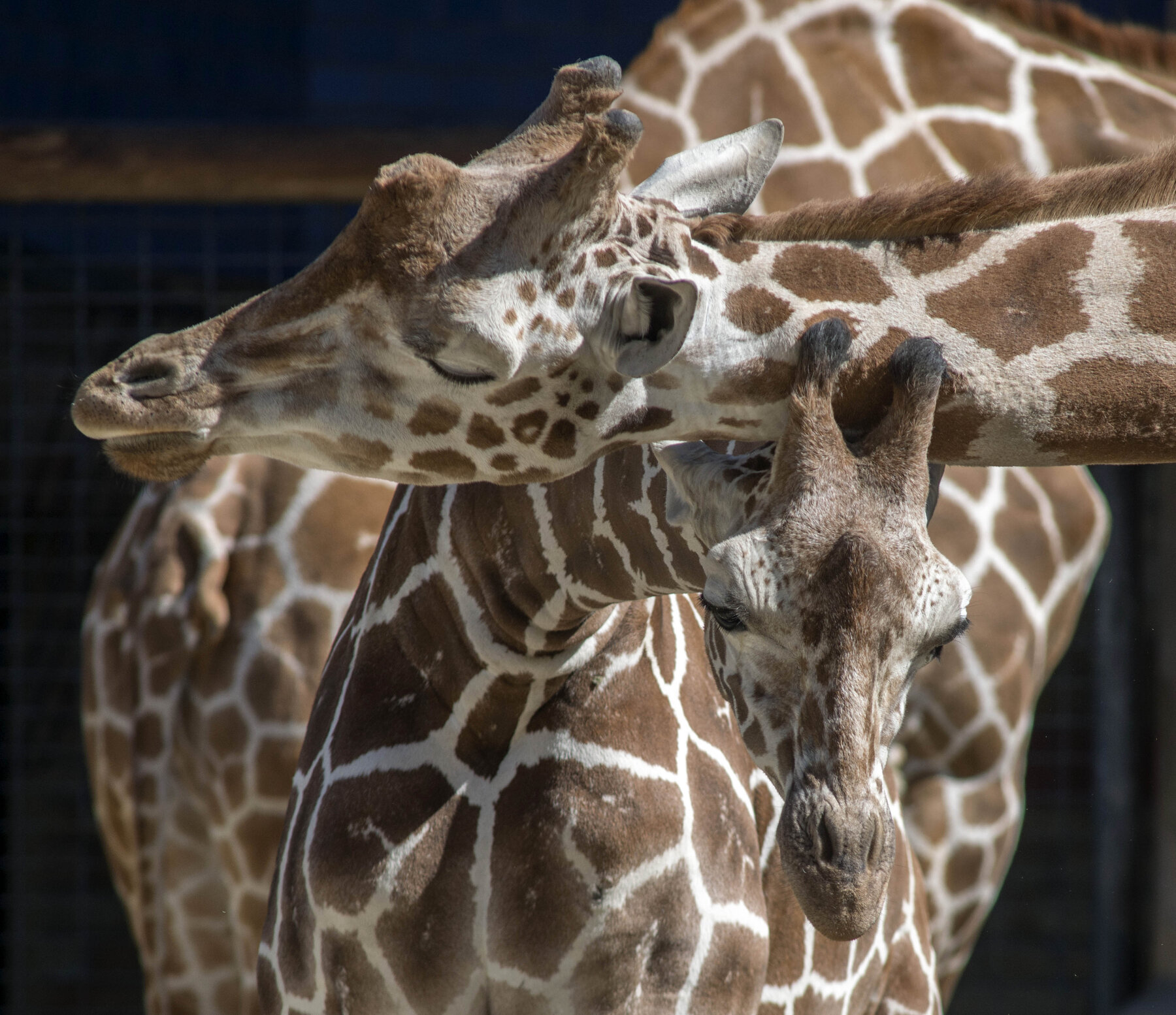
Ninety percent of all sexual activity observed in giraffes is with partners of the same sex.
Are there any other great love stories for visitors to learn about at Zoo Berlin?
“Of course! Our ‘Macho man?’ tour focuses on gender roles in the animal kingdom and asks whether the males are always the dominant partner, while taking a humorous look at various reproduction strategies and sexual behaviours. These tours can be booked via the Zoo School and are a fun and interesting option for a staff outing or a great way of ‘sexing up’ a Zoo visit with friends. The sheer diversity of the animal kingdom makes it a truly fascinating topic. There is something remarkable to learn about each and every species, and nature always has a few tricks and surprises up its sleeve. It is extremely important for us to inform and educate people about this, because biodiversity is declining at an alarming rate around the globe. I truly believe in the motto ‘We only protect what we love’, so it’s my goal to make people fall in love with the wonderful world of animals.”
